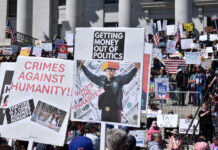As the parent of a nonverbal child with autism, the condition is not one that I watch from the sidelines; it’s one that defines my family’s experiences every day. Every time public figures revive false narratives about vaccines and autism, it reinforces stigma and undermines the incredible progress we’ve made in advocating for acceptance and evidence-based care.
False narratives stem from a common statistical misunderstanding: the correlation-causation fallacy, the mistaken belief that if two trends rise in tandem, one must be causing the other. Our brains are hardwired to spot patterns, but it’s easy to fall into this trap. In statistics, a correlation — where two trends move together — is not proof of a causal relationship.
For example, the number of people who drowned in swimming pools each year once closely tracked with the number of Nicolas Cage movies released. Nobody would suggest that Nicolas Cage movies are causing people to drown. The two trends are simply a bizarre coincidence, a correlation without causation.
Similarly, the fact that vaccination rates and autism diagnoses have both risen doesn’t prove that one causes the other. America’s public health leaders must be careful not to let such reasoning errors endanger our children’s health.
The real test is whether autism rates change when vaccines or their usage change. Health and Human Services Secretary Robert F. Kennedy Jr. is one of a small but powerful group who insists that childhood vaccines are causing an increase in autism. President Donald Trump took it further, saying that pregnant women who take Tylenol put their children at higher risk of autism and urging them not to take the common painkiller — despite no definitive link between autism and the drug.
But more than two decades of scientific studies and real-world examples have proven that there is no such link.
Consider the example of the measles, mumps and rubella vaccine. A massive study in Denmark following hundreds of thousands of children found no increase in autism among the vaccinated.
Another example is the removal of thimerosal from vaccines. RFK Jr. once claimed that this vaccine preservative was a likely cause of autism. Yet after thimerosal was removed from vaccines in Denmark in the 1990s, autism diagnoses continued to rise.
Fortunately, with a few basic statistical techniques, it’s easy to separate scientifically sound findings from speculation. The first step is to compare “like with like” — in other words, to design studies where the only factor that changes is vaccination. Compare two children from the same age group, under the same diagnostic rules, with similar socioeconomic backgrounds and access to doctors.
By stacking thousands of these like-for-like comparisons, we can look past false narratives to estimate the underlying facts. And vaccine studies designed in this way consistently arrive at the same conclusion: There’s no evidence that vaccines cause autism.
Parents should use this critical lens when assessing scientific claims themselves. Each time they read a new study, they can ask: What is being compared? What’s being held constant, and what’s changing? Could the authors be mixing up cause and effect? If the authors’ conclusion is true, what else should we expect to see — and do we actually see it?
Even more importantly, public health officials must ensure that policy is based on scientifically rigorous conclusions. Families like mine depend on leaders such as RFK Jr. to tell the truth plainly, not to trade it for politics.
Greg Scaduto is the parent of a nonverbal autistic child, author of the blog “Broken but Readable” and an advocate for the Autism Society. This originally appeared in U.S. News & World Report.






